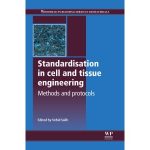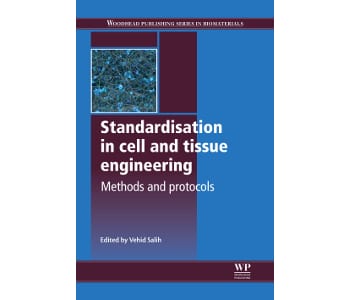 Standardisation in Cell and Tissue Engineering: Methods and Protocols
Standardisation in Cell and Tissue Engineering: Methods and Protocols
Edited by V Salih
Hardcover/ eBook
ISBN: 9780857094193 / 9780857098726
276 pages
€170
Click here for more information
Reviewed by Professor Robert A. Brown, UCL Tissue Repair & Engineering Centre
This is a general text and research reference book focussing specifically on the needs and problems of achieving (high) standards of operation in this exceptionally diverse/fragmented and fast moving field. Securing agreed operating standards and widely adopted protocols is arguably a serious need in tissue engineering. So many groups are joining the field every year, importantly from so many diverse sectors, that we have an explosion of ‘versions’ of any given tissue equivalent or analysis. All of these are difficult to compare and so to translate into useful products or treatments. A text such as this is needed to begin (at last) to crystalize some of the most common concepts and approaches and alert early entrants or students to the need for, and demands of standardisation.
The book divides into two parts; firstly providing its view of the basics of tissue engineering, secondly delving into the detail of what needs to be standardised and how. The first chapter outlines some of the basic tissue needs, in terms of cells and the extracellular matrix (as components and processes). This is a very easy and general summary, light on the cell content but heavier on the typical protein and polysaccharide components found in common connective tissues. At this stage we understand that this text is concerned mainly with the engineering of matrix-rich, as opposed to cell-rich devices (ie. skins, bones, cartilages etc. rather than kidney, muscle liver). This is an important distinction as these two generic sectors have very different demands both for production and for standardisation.
Section I continues with descriptions of strategies for direct fabrication of collagen-rich tissues and bioreactor growth in culture (ie. indirect production) of both soft and hard connective tissues and cell population expansion. These much more detailed chapters set the scene for key issues of bioreactor and support material preparation, again predominantly aimed at matrix-rich connective tissues. This cell- matrix-rich distinction comes into focus with the last chapter on techniques and expectations for vascularisation of constructs. Selection of this single key factor (from the many available) was presumably driven by the current obsession with perfusion as critical for tissue survival. However, while this may be true of cell-rich tissues it is far less the defining factor for matrix-rich structures with their lower cell densities. This chapter might have been better focused on factors affecting the development/maintenance of useful physical strength and durability –mechanical properties.
Section II starts with an excellent general overview of the importance and nature of standards for tissue engineering: what they are good for, with examples of how we might develop them. This has a focus on the support materials (scaffold biomaterials) and bioactive molecules to be used and is usefully followed by a detailed review of GLP (good lab practice) for cell culture. Three chapters then deal neatly with standards and techniques around quality control, chemical analysis (for biomaterials and supports) and sterilisation. This last addition focusses on sterilisation of sensitive materials, including tissues, and is an extremely useful analysis of available approaches to this difficult area. The book ends with a seriously useful analysis of how tissue engineered devices can and do (or do not) get translated to commercial manufacture.
In summary, I am reminded of the catch-line in my grandson’s favourite, Thomas the Tank Engine stories – this is a “really useful…book/engine”. There are few if any texts which aim to burrow into this area of tissue engineering – the nature and excitement of the subject all too soon distracts from its “standardisation”. Yet without translation into functional products and treatments it may generate more fun than substance. I suspect that few readers will select this as a topic for bedtime entertainment, but as a teaching primer and as a dip-in reference book, this is a really useful text.

















